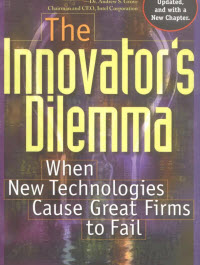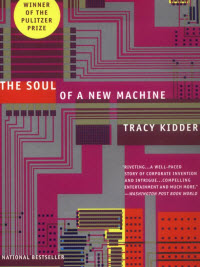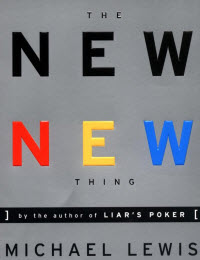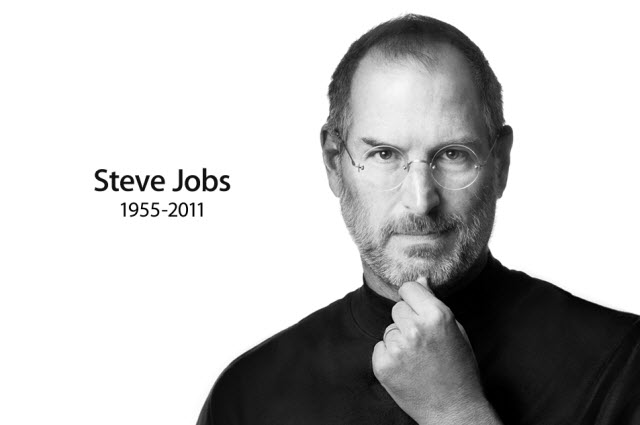Technology teaches us to forget the past. Last year’s tech news seems like it has no use whatsoever. Thankfully, historians beg to differ, and they have begun to preserve the history of the tech industry as it becomes more and more important to the evolution of our lives and world. Those who understand the history of technology and the people who made it happen can probably figure out more quickly how to build on the shoulders of giants and advance technology further. Here’s some books that are great fun to read because they either relate great ideas that influenced a generation of technologists or because they chronicle the lives of people who changed the world. This list includes books that have stood the test of time and are worth a look for the history lover. And it includes new books, such as Walter Isaacson’s tome on Steve Jobs, that are likely to be the new classics. It doesn’t, however, include any tech textbooks. My focus is on books that deliver not just a technical understanding of how something works today, but hard-earned wisdom.
1. Steve Jobs by Walter Isaacson (2011). This 571-page tome captures the key moments and thoughts of Steve Jobs, c0-founder of Apple. Isaacson built a moving portrait of the life of the tech icon after 40 interviews with him. Aware of Jobs’ reality distortion field, Isaacson also interviewed more than 100 key players about what Jobs told him, getting a full picture of the man from many points of view. All of the key players in the life of Jobs — his ex-girlfriends, former employees, board members, wife and children, and industry luminaries such as Bill Gates — talk about their interaction with Jobs, from his days growing up in Silicon Valley, to his pot-smoking days at a commune with an apple orchard in Oregon, until his death from cancer in 2011. Isaacson’s book captures the complexity of a man who could be a tyrant at one moment and an emotional wreck the next. Whatever you think of Jobs or his accomplishments, it is a must-read for anyone remotely related to the business of technology. The book makes you feel like you know the man behind the legend by the time you’re finished. It is so well done that it inspired me to write this list.
 2. The Innovator’s Dilemma by Clayton Christensen (1997). It took a Harvard Business School professor to see why new technologies can cause great companies to fail. After studying industries from steel to hard drives, Christenson discovered that listening to customers can cause a great executive to misread the market. Typically, customers ask for new features, and the most enthusiastic customers ask for lots of new features. The managers who accommodate requests and put them into the next version of the product run the risk of failing because they make their products too complicated. They don’t notice that for ordinary customers, the technology is good enough. When a technology becomes good enough, the market leader may fail to notice, only to be disrupted by a competitor who comes into the market and offers a good enough product. Too many companies are afraid to disrupt their own products, and so they are disrupted instead. At the same time, businesses that routinely improve their products often miss the boat when a new technology comes along and becomes a huge wave. While the book focuses on business strategy, it offers a lot of insights and it had a huge impact on the tech industry. And Christensen’s “Innovator’s” series of books became a cottage industry. For innovators of any stripe, the whole series is worth reading.
2. The Innovator’s Dilemma by Clayton Christensen (1997). It took a Harvard Business School professor to see why new technologies can cause great companies to fail. After studying industries from steel to hard drives, Christenson discovered that listening to customers can cause a great executive to misread the market. Typically, customers ask for new features, and the most enthusiastic customers ask for lots of new features. The managers who accommodate requests and put them into the next version of the product run the risk of failing because they make their products too complicated. They don’t notice that for ordinary customers, the technology is good enough. When a technology becomes good enough, the market leader may fail to notice, only to be disrupted by a competitor who comes into the market and offers a good enough product. Too many companies are afraid to disrupt their own products, and so they are disrupted instead. At the same time, businesses that routinely improve their products often miss the boat when a new technology comes along and becomes a huge wave. While the book focuses on business strategy, it offers a lot of insights and it had a huge impact on the tech industry. And Christensen’s “Innovator’s” series of books became a cottage industry. For innovators of any stripe, the whole series is worth reading.
 3. The Soul of a New Machine by Tracy Kidder (1981). This is the classic tech product creation story. Kidder writes the book so that you feel like you are a fly on the wall in the meetings at Data General, a minicomputer vendor in the 1970s. The author chronicles the turf war that takes place between two internal design groups within the company that are trying to create the great next-generation machine. The two teams are pitted against each other and they test whether a “quick and dirty” computer made by recent college graduates will make a better product or one that is painstakingly designed by an elite group. The book won a Pulitzer Prize in another era, but what hasn’t changed is difficulty of dealing with egos in team dynamics or the frenetic pace of product innovation. The book has inspired countless other business tales, including my own books on the history of Microsoft’s Xbox video game business.
3. The Soul of a New Machine by Tracy Kidder (1981). This is the classic tech product creation story. Kidder writes the book so that you feel like you are a fly on the wall in the meetings at Data General, a minicomputer vendor in the 1970s. The author chronicles the turf war that takes place between two internal design groups within the company that are trying to create the great next-generation machine. The two teams are pitted against each other and they test whether a “quick and dirty” computer made by recent college graduates will make a better product or one that is painstakingly designed by an elite group. The book won a Pulitzer Prize in another era, but what hasn’t changed is difficulty of dealing with egos in team dynamics or the frenetic pace of product innovation. The book has inspired countless other business tales, including my own books on the history of Microsoft’s Xbox video game business.
 4. Andy Grove: The Life and Times of an American by Richard S. Tedlow (2006). Before we move on to making a god out of Mark Zuckerberg, it’s good to remember who came before him. No one had a more remarkable rags to riches story than Andy Grove, the former chief executive of Intel. He was born a Hungarian Jew in 1936 and he survived the Holocaust while his father did not. During the bloody Hungarian revolution of 1956, he fled the country, crawling across the Austrian border in the mud. He arrived in America penniless, found help and managed to work his way through college. He graduated in time to catch the wave of change sweeping through the new Silicon Valley with the creation of seminal chip companies such as Fairchild. He was the third employee at Intel and became its CEO, taking no prisoners along the way. Grove became a statesman of the valley and a feared boss for those who didn’t have their act together. Among his decisions: engaging in a strategic retreat, where he and Gordon Moore decided to exit the memory chip market to focus on microprocessors. Then came IBM, looking for a microprocessor to put in its first personal computer. After that, Intel was golden and Grove was a key reason that Intel became the world’s biggest chip maker.
4. Andy Grove: The Life and Times of an American by Richard S. Tedlow (2006). Before we move on to making a god out of Mark Zuckerberg, it’s good to remember who came before him. No one had a more remarkable rags to riches story than Andy Grove, the former chief executive of Intel. He was born a Hungarian Jew in 1936 and he survived the Holocaust while his father did not. During the bloody Hungarian revolution of 1956, he fled the country, crawling across the Austrian border in the mud. He arrived in America penniless, found help and managed to work his way through college. He graduated in time to catch the wave of change sweeping through the new Silicon Valley with the creation of seminal chip companies such as Fairchild. He was the third employee at Intel and became its CEO, taking no prisoners along the way. Grove became a statesman of the valley and a feared boss for those who didn’t have their act together. Among his decisions: engaging in a strategic retreat, where he and Gordon Moore decided to exit the memory chip market to focus on microprocessors. Then came IBM, looking for a microprocessor to put in its first personal computer. After that, Intel was golden and Grove was a key reason that Intel became the world’s biggest chip maker.
 5. The New New Thing: A Silicon Valley Story by Michael Lewis (2001). This tale showed how all roads led to Jim Clark, the founder of Silicon Graphics, Netscape and Healtheon. Lewis, the author of Liar’s Poker, swept into Silicon Valley and cozied up to Clark, the brilliant graphics expert who became the most important technology entrepreneur of the 1990s. The tale shows how the boom surrounding the internet turned the geeky Clark into one of the valley’s first billionaires. Clark rewrote the rules of Silicon Valley and capitalism itself. Lewis also chronicled Clark’s creation of Hyperion, a high-tech yacht that was more complex than a 747. Like Kidder, Lewis is a great storyteller who captured the poignant moments of Clark’s life. Clark didn’t set the world on fire with Healtheon, but his protegé, Marc Andreessen, has inherited the mantle of the uber-entrepreneur and investor of Silicon Valley.
5. The New New Thing: A Silicon Valley Story by Michael Lewis (2001). This tale showed how all roads led to Jim Clark, the founder of Silicon Graphics, Netscape and Healtheon. Lewis, the author of Liar’s Poker, swept into Silicon Valley and cozied up to Clark, the brilliant graphics expert who became the most important technology entrepreneur of the 1990s. The tale shows how the boom surrounding the internet turned the geeky Clark into one of the valley’s first billionaires. Clark rewrote the rules of Silicon Valley and capitalism itself. Lewis also chronicled Clark’s creation of Hyperion, a high-tech yacht that was more complex than a 747. Like Kidder, Lewis is a great storyteller who captured the poignant moments of Clark’s life. Clark didn’t set the world on fire with Healtheon, but his protegé, Marc Andreessen, has inherited the mantle of the uber-entrepreneur and investor of Silicon Valley.

